Seattle Mariners: The 5 Most Disappointing Acquisitions of 2018

Quite a few things went right for the Mariners this past season. In ways, they greatly overachieved. But for an 89-win season, it’s surprising how many things didn’t go according to plan.
Jerry Dipoto is constantly shifting his roster to field a contending team, often with very limited resources. Consequently, the most viable move for him to make the majority of the time is to bet on certain players reaching their projected ceiling. This doesn’t always go so well, for obvious reasons. In fact, Dipoto failed to fully hit on a lot of the risks he took this past offseason, which ultimately led to some of Seattle’s inconsistencies in 2018.
Before we torpedo into the upcoming offseason, I feel that it is necessary to take a step back and learn from certain mistakes. Perhaps such reflection may allow one to lower their expectations of certain future moves, offering them the opportunity to take a closer look to develop a more researched opinion. Some of the acquisitions Seattle made over the last year may have looked great on paper, but when you dig a bit deeper, their struggles begin to make sense.
These are the five most disappointing Mariners Jerry Dipoto acquired either in the 2017-18 offseason or during the season. The players included on this list failed to meet the relatively realistic expectations Seattle’s front office and its fanbase put on them when they were acquired, leaving much to be desired on the field. Well, except for one case. You’ll see.
1B RYON HEALY
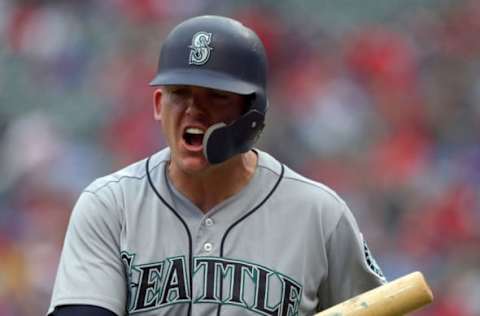
The trade for Ryon Healy didn’t make a lot of sense to begin with. He better fit the mold of the type of player Jack Zduriencik’s regime would fall for, rather than Jerry Dipoto’s. For Oakland, Healy was an undisciplined hitter with a ton of raw power. What attracted Dipoto the most was Healy’s five years worth of club control, paired with Oakland’s relatively low asking price.
Seattle had high hopes for Healy to develop an upgraded plate approach. In ways, he instead regressed. Of the 140 hitters that qualified, Healy had the 16th worst offensive season in the MLB, per FanGraphs offensive metrics. Simply put, he was abysmal.
Healy tended to get streaky at times, whether his bat would seemingly come alive out of nowhere, or it would disappear into thin air for weeks at a time. The latter happened far more often than it should have, though that isn’t to say Healy didn’t show flashes every now and then.
August was Healy’s best month of the year by far. Coincidentally, Robinson Canó returned from suspension in the middle of month, making most of his starts in Healy’s place at first base. Healy still saw 24 games of action that month, slashing .289/.322/.446 to the tune of a 114 wRC+, perhaps indicating that the 26-year-old plays best when splitting time. However, that didn’t carry over into September and Healy finished the season on a poor note.
It’s hard to see what Healy’s future in Seattle holds. The Mariners may move on to Canó full-time at first base in 2019, if that’s what offers them the most roster flexibility moving forward. In that case, it may be in the Mariners’ best interest to capitalize on his Minor League options and four years of remaining club control by either trading him or allowing him to work on things in Tacoma.
As it stands, as long as Healy remains on Seattle’s roster, he appears to be no more than a bridge to Evan White.
RHP ADAM WARREN
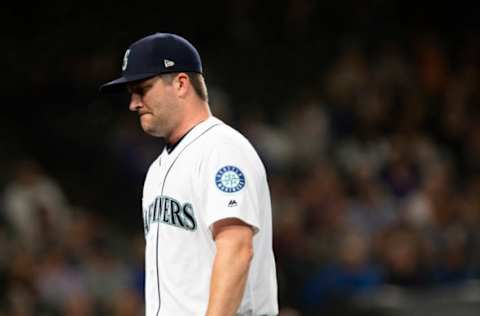
I’ve gone over this before, but Adam Warren felt like an absolute steal with the Mariners traded for him at the deadline. The deal capped off a complete reinforcement of Seattle’s bullpen, which included acquisitions of relievers Zach Duke and Sam Tuivailala. It was obvious that the M’s could not compete for a playoff spot with their current rotation, and didn’t hold the proper resources to go out and supplement it, so beefing up their bullpen was the next best thing. It seemed they had done, and may have even gone overkill, after getting Warren.
Instead, Duke was horrid and Tuivailala had his season cut short when he injured his achilles. But the one that really gets me is Warren, who wound up on the brink of disaster in his two months with Seattle.
Maybe I set my expectations way too high for Warren. I saw the 31-year-old reliever as an ultra-versatile piece that could help the Mariners in several ways, whether it be in long relief, high-leverage situations, or even starting, and strikeout a lot of guys while doing it. Warren’s pre-trade K/9 of 11.10 fell to 6.23 and he struggled with the long ball, often coming across as “just another guy” instead of the dominant reliever I once thought the M’s were getting.
Upon reflection, I still feel the same way. Warren should have absolutely been better than he was, and his struggles with Seattle are a major disappointment. Warren is a free agent this offseason, and I actually do hope they bring him back. I don’t think this was a proper representation of what he can be. Maybe I’ll just be let down again.
OF ICHIRO SUZUKI
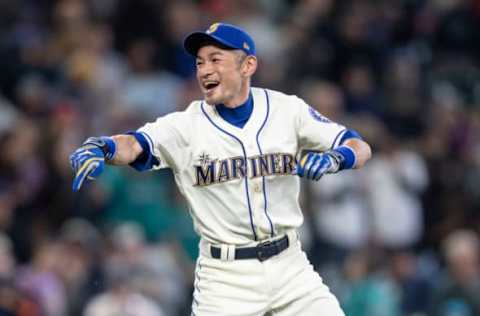
No, I did not have any expectations of Ichiro being good this season. I’m not that daft. The reason why the 44-year-old Mariners legend is on this list is because of the front office’s decision to initially bring him back as a player. For a team that consistently expressed a desire to end their historic postseason drought leading up to the season, bringing in the shell of a Seattle icon felt like a complete reversal of identity in the blink of an eye.
As fans, it felt like we had been spoon-fed lie after lie up until that point. By making this move, the Mariners made it clear that they weren’t serious about contention whatsoever. It was obvious that the team’s ownership had forced the front office’s hand into wasting a roster spot for ticket sales. This was probably always the plan, but Ben Gamel’s oblique strain in early March gave them a clear path to execute this horrible decision.
Ichiro only played 15 games, which was still 15 games too long. As expected, he was a dumpster fire at the plate and equally as bad in left field, despite an exciting home run robbery in the second game of the season. After Ichiro forfeited his roster spot in favor of a position within the organization, I had no issue with his presence on this team. It was nice to see him involved in a very fun season. My only problem was that this is what should have been done to begin with.
Of course, Ichiro hasn’t played his last game in a Mariners uniform. Jerry Dipoto has already confirmed that the Japanese native will be included on the team’s 28-man roster for its season opener against the A’s in Tokyo next March. He’ll likely start, too, because who cares about actually winning real games, right?
RHP JUAN NICASIO
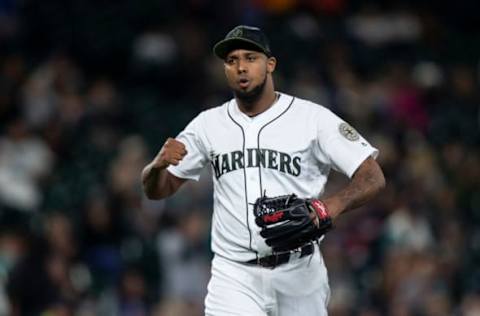
Honestly, Juan Nicasio‘s season probably wasn’t as bad as it may have seemed. In fact, the four-point divide between his ERA (6.00) and FIP (2.99) indicates that he was an extraordinarily unlucky pitcher. But that still doesn’t make his season any less of a disappointment.
Nicasio signed a two-year, $17 million contract with the Mariners shortly after the team missed out on Shohei Ohtani. The deal was not a consolation prize by any means, but it did seem to elevate Seattle’s bullpen near elite status.
At the time, Nicasio had been one of the MLB’s most underrated and dominant relievers since making the full-time switch to the bullpen. He appeared to be the powerful bridge to Edwin Díaz that Seattle so desperately desired, which allowed them to delegate David Phelps and Nick Vincent to more middle relief roles.
Unfortunately, Phelps’ season abruptly ended with a torn UCL in Spring Training, and the aforementioned bad luck stayed with Nicasio from beginning to end. That led to Seattle acquiring Álex Colomé in an early season deal with the Rays, and Colomé succeeded in fulfilling the role Nicasio was supposed to.
Nicasio wound up on the disabled list twice; the second of which, due to right knee inflammation, ultimately ended his season. Seattle will have Nicasio back in its bullpen for 2019, and fans should expect a bounce-back season out of him. 2018 may have been a disaster for him, but it’s probably not an accurate reflection of the kind of positive impact Nicasio can have on this bullpen.
2B/OF DEE GORDON
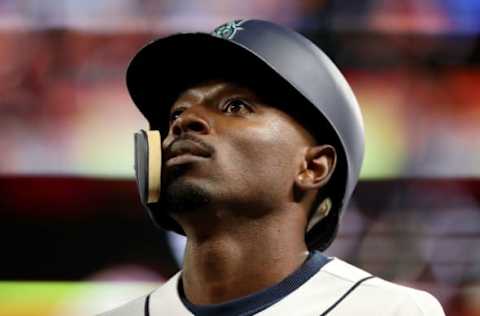
I never would have imagined writing this after seeing the kind of start Dee Gordon got off to this year. Highlighted by a 12-game hit streak to open the season, Gordon finished the month of April slashing .309/.339/.400. Pair that with his electric personality that drove the identity of this ballclub, the Mariners had seemingly struck gold.
The biggest question mark about Gordon was his move to center field. With Robinson Canó at the helm of Gordon’s career home of second base, Seattle had hoped his elite speed and athletic ability would translate well to one of the hardest positions in all of baseball. Given the circumstances, Gordon held his own on most occasions.
Things quickly changed when Canó was suspended for 80 games, leaving a major hole at a position the Mariners had zero depth at. All of Gordon’s offseason preparation for his center field switch had gone out the window, as the M’s required his skillset back at his natural position.
Just a week later, Gordon found himself on the disabled list with a toe injury. After that, his production both offensively and defensively dwindled. The final numbers Gordon posted were unlike anything in his career, in a bad way. Coming off a 7.5 UZR season at second base in 2017, Gordon finished 2018 with a -3.5 UZR at a position he was just three years removed from winning a Gold Glove at.
At the plate, Gordon finished with a league-worst 1.5 BB%, which resulted in his demotion from the leadoff spot in Seattle’s lineup. Consequently, he also finished just outside the bottom 10 in on-base percentage. While he was never an elite player in either stat, these were awfully unpredictable marks. The injury also seemed to have greatly affected his speed and athleticism, as he posted his lowest stolen base total in a full season at 30. For comparison, he swiped 30 bags in a suspension-shortened 2016 campaign, in which he only played 79 games.
Next. Deal or No Deal –– Mariners Arbitration-Eligible Players. dark
Gordon and the team’s collective struggles began to build up a tension that led to a clubhouse confrontation between he and Jean Segura. This may result in the departure of one or both of these players, with Gordon and his $13 million salary being the more favorable choice.